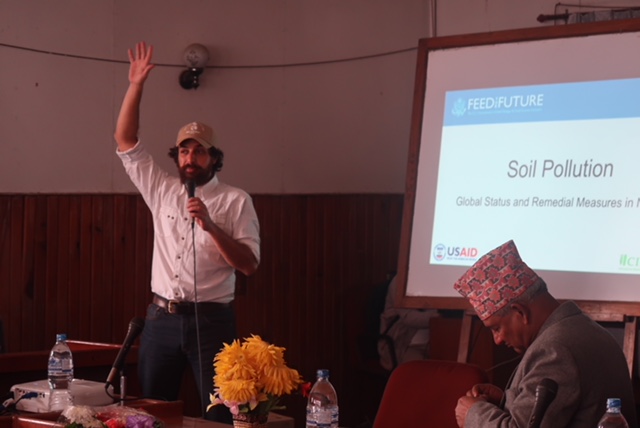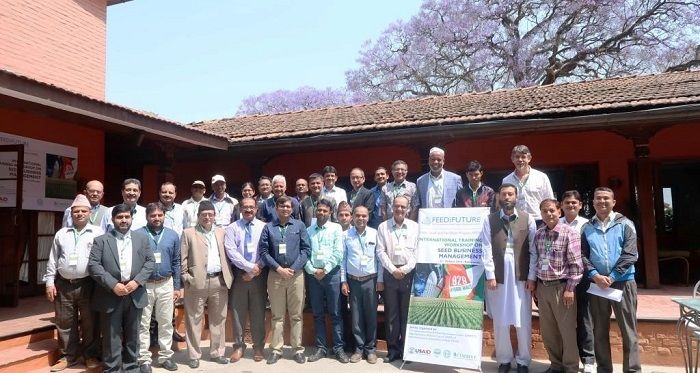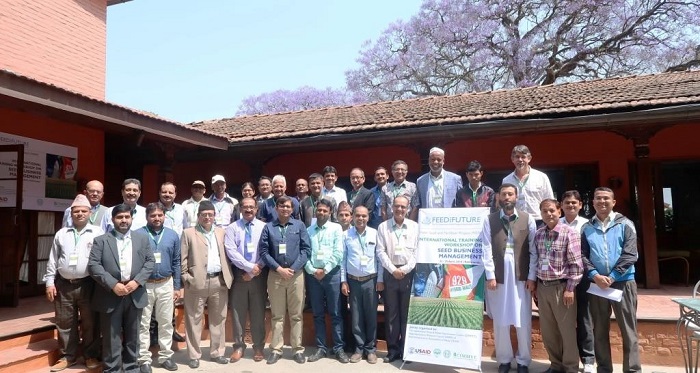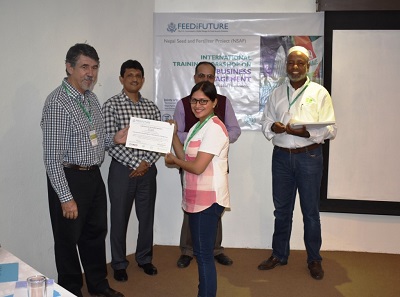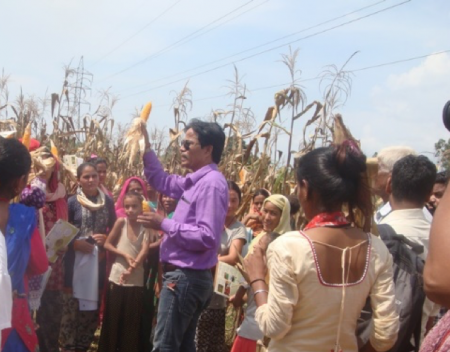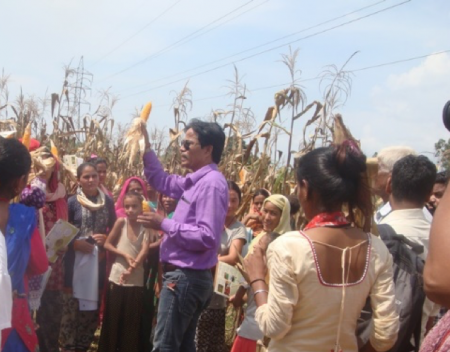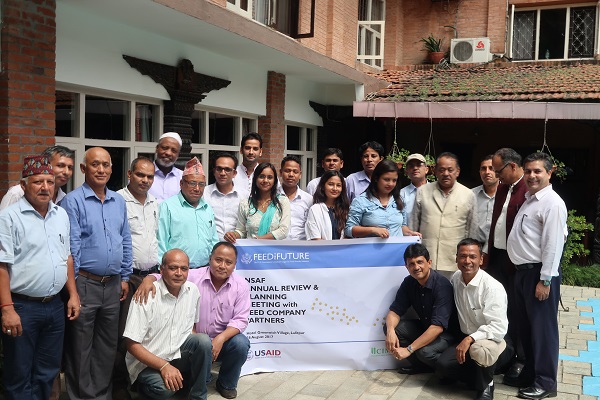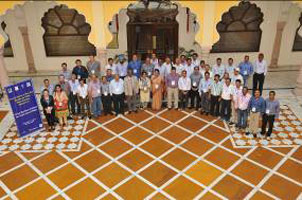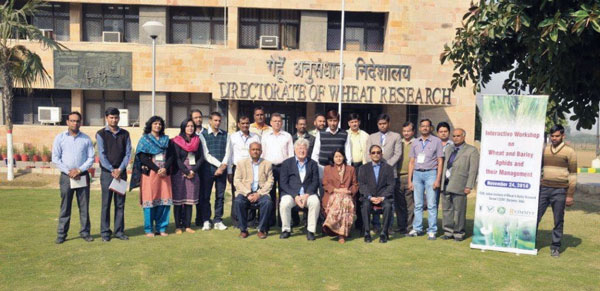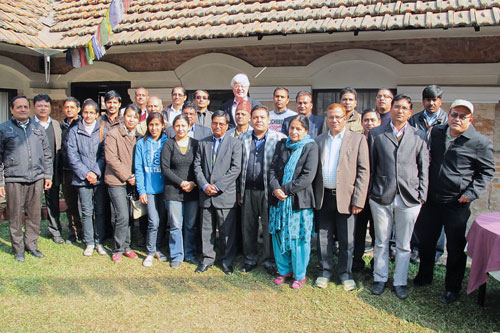Nepal Seed and Fertilizer Project (NSAF)
The Nepal Seed and Fertilizer (NSAF) project facilitates sustainable increases in Nepal’s national crop productivity, income and household-level food and nutrition security, across 20 districts, including five earthquake-affected districts.
Nepal’s agriculture is mostly small-scale and subsistence-oriented, characterized by a mix of crop and livestock farming. The agriculture sector represents about one-third of the country’s gross domestic product and employs 75 percent of the labor force.
Over half of Nepal’s farms operate on less than half a hectare, with the majority unable to produce enough to meet their household food requirements for the whole year. Combined with an increasing urban population, it will not be possible for the country to meet future food demand without increased agricultural productivity and competitiveness of domestic production.
Major cereal crops and vegetables currently have low yields, but there are significant prospects for increases through improved seed and soil fertility management practices. A large part of this yield gap results from a lack of knowledge, inadequate access to affordable improved technologies, extension services and markets due to weak public and private sector capacity to provide support services needed by small scale farmers.
NSAF promotes the use of improved seeds and integrated soil fertility management technologies along with effective and efficient extension, including the use of digital and information and communications technologies. The project will specifically increase availability of technologies to improve productivity in cauliflower, lentils, maize, onions, rice and tomatoes. It will also build competitive seed and fertilizer systems that significantly expand seed production, marketing and distribution by enhancing the capacity of public and private sectors in seed and fertilizer value chains.
Agriculture development needs to be locally owned and led through inclusive business models involving women and disadvantaged groups and farmers institutions. There is a need to further the development of Nepal’s cereals, legumes and vegetable sector by:
- Strengthening public-private coordination mechanisms
- Developing market systems that are agile, resilient, and adaptive
- Propelling agricultural growth through evidence-based policy change and harmonization.
Food security in Ukraine
Supplemental funds released in 2022 will be used to respond to the impact of the Ukraine war at the household level. CIMMYT and its partners will develop food security and resilient agriculture market systems, to advance the delivery of improved agriculture input management knowledge and technologies, application of best crop management practices, and development of local capacity to apply improved technologies.
The objective is to build resilience of smallholder farmers in four areas:
- Protecting and sustaining crop production for strengthening local food production and consumption systems.
- Supporting efficient agriculture supply chain.
- Strengthening local cooperatives and micro, small- and medium-sized agribusiness enterprises.
- Addressing the impact of global fertilizer shortages by exploring innovative products, novel application techniques and local market development.
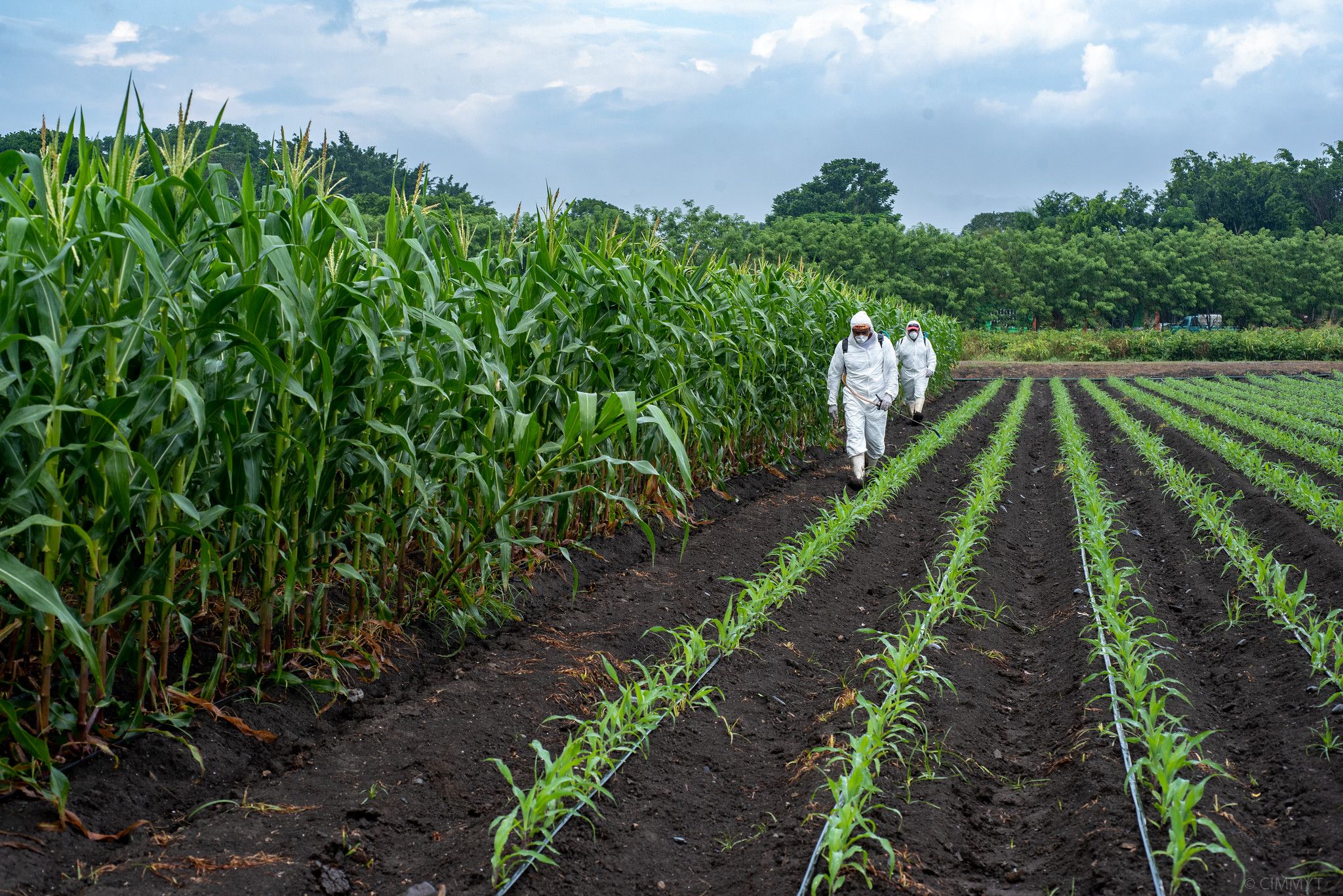
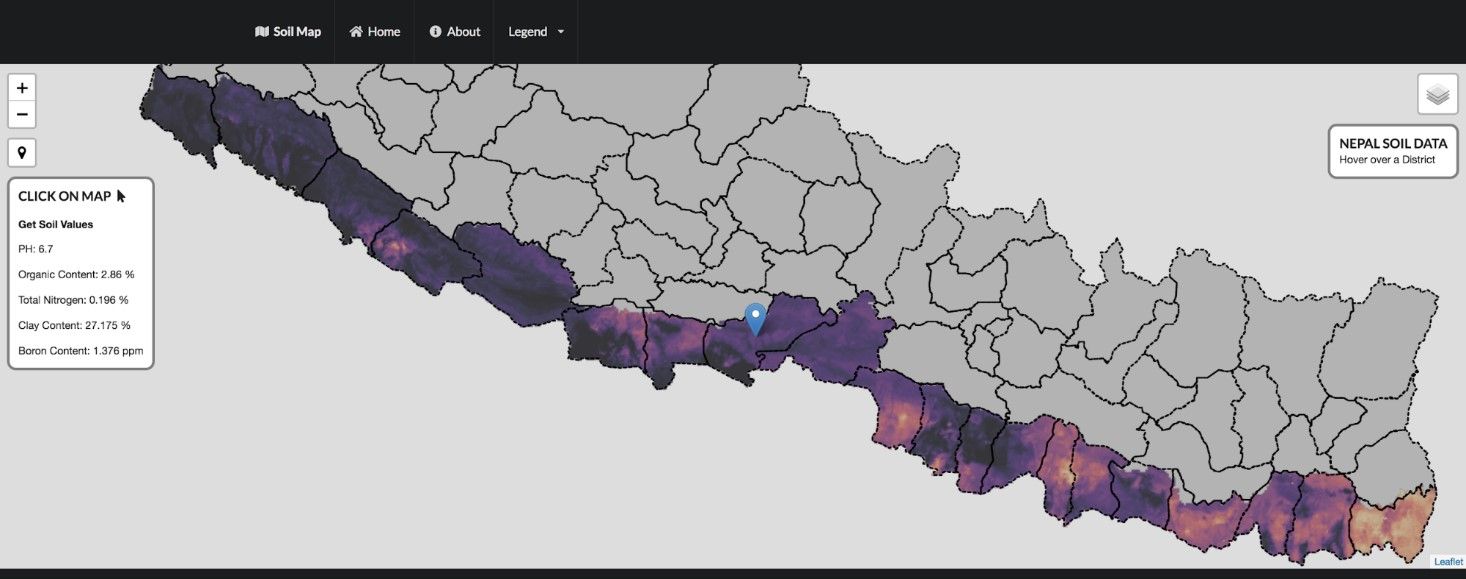
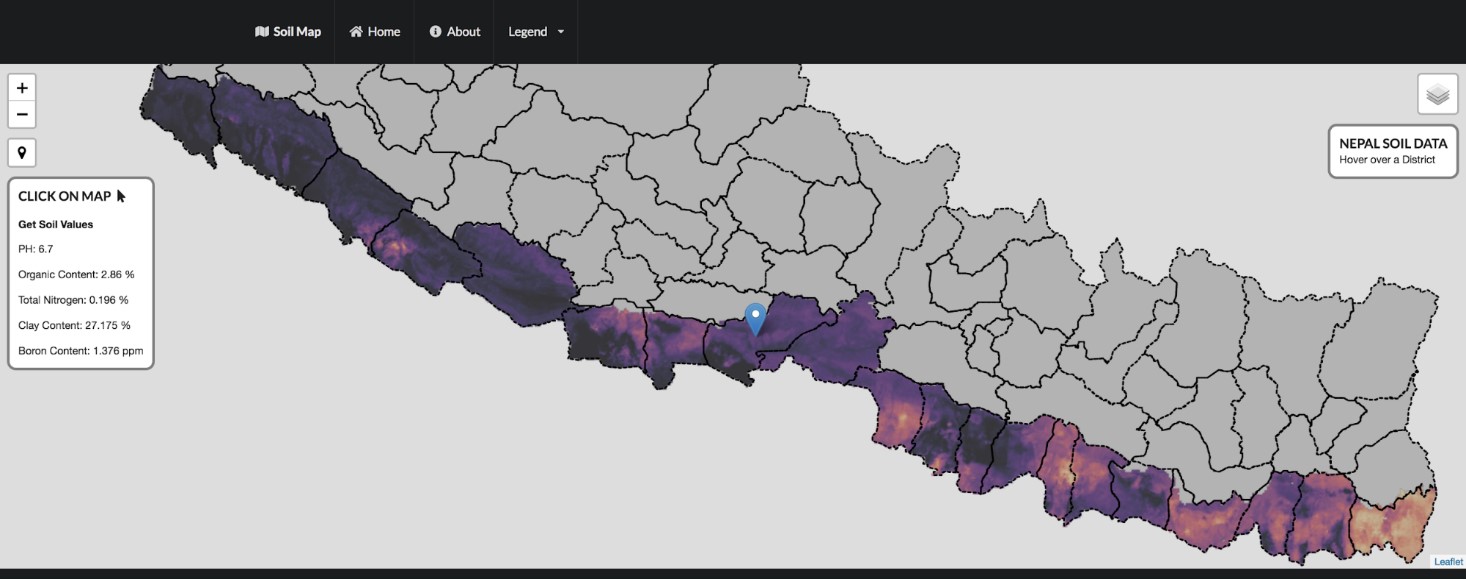 KATHMANDU, Nepal (CIMMYT) — The International Maize and Wheat Improvement Center (CIMMYT) is working with Nepal’s Soil Management Directorate and the Nepal Agricultural Research Council (NARC) to aggregate historic soil data and, for the first time in the country, produce
KATHMANDU, Nepal (CIMMYT) — The International Maize and Wheat Improvement Center (CIMMYT) is working with Nepal’s Soil Management Directorate and the Nepal Agricultural Research Council (NARC) to aggregate historic soil data and, for the first time in the country, produce 